IN CONVERSATION WITH
SOLVEIG LEINAN-HERMO AND BENTE ANDERSEN
By Marie Hermo Jensen
INTRO (2022)This article was originally written in 2019: before Covid 19 changed so much of our world and our relationships with one another, before borders closed, before global movement was paused and isolation became normalised, and before the devastation of the Russia-Ukraine war and its consequent sanctions wreaked havoc across and within borders. I originally wrote this article to try to explain the importance of cross-border collaboration in the North as well as the importance of applying performing arts to the storytelling of history which I believe should be done from a local point of view. The understanding of the Barents region and the cultural closeness seems distant from a Central European perspective, and even within my own country. This is why I feel that reflecting on cross border collaboration, and the power of the arts is vital if we are to understand how we can sustain creative relationships in these current turbulent times.
This article was originally published in 2019 in Norwegian in “Mer Bevegelse» (More Movement) by Dance Info Norway.
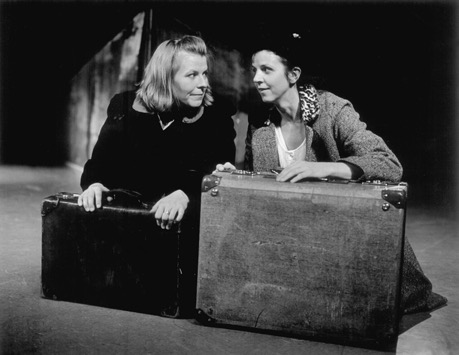 Bente S. Andersen and Solveig Leinan-Hermo in SVENSK-ONGAN (1994) Photo: Ola Røe ARTICLE (2019)Through our collaboration, we can create a new dance that has sprung from a northern horizon. A dance where the Barents area's distinctiveness, with all that it entails of cultural clashes but also great similarities, is highlighted.
Bente S. Andersen and Solveig Leinan-Hermo in SVENSK-ONGAN (1994) Photo: Ola Røe ARTICLE (2019)Through our collaboration, we can create a new dance that has sprung from a northern horizon. A dance where the Barents area's distinctiveness, with all that it entails of cultural clashes but also great similarities, is highlighted. Barents Dance Collaboration - Report to the Barents Euro Arctic Arts Council.
Maria Rydén (1999)
The Barents region is ever changing. Today, the region spans 14 counties, counties and oblasts in the northern parts of Norway, Sweden, Finland and Russia. About five and a half million people live here (info from barents.no). Previously, northern Norway bordered only on Finland, but after World War II the landscape changed and Russia moved into the neighbourhood. On 11 January 1993, the Kirkenes Declaration was signed with the aim that cultural collaboration should contribute to exchange and stabilisation within the region and Europe. It is often written that it was Thorvald Stoltenberg who took the initiative for collaboration that day. Formalities are important, but they are only a small part of the story. It is in our nature to be curious about our neighbours. Norway already had cultural exchange across the border through music and sports long before 1993. Historically we have interacted with the Russians through the Pomor period all the way back to the 18th century, where trade, language, food and culture have gone hand in hand. This people-to-people collaboration has created a climate that has brought about a desire for further contact, dialogue and understanding. At the same time, a new culture and new artistic expressions have emerged that we would not have had without being curious neighbours.
The fiery soulsThe strength of the artist lies in the soul, who can, with “red threads” connect and collaborate in encounters with the community of people living there. What they experience, or their perception of what they experience, is often the basis of their work. I'm so lucky to have worked with two women who have embraced the collaboration within Barents and Russia, actress Bente Andersen and my mother, dance artist Solveig Leinan-Hermo. Through conversations with them, I have tried to elaborate on thoughts from this point of view. At the same time, it is important to remember that there are no individuals who get to where they are without a cheerleading squad and help pulling the load, something both women point out. There are many who have been central in various constellations of The Barents collaboration, who have worked extremely hard to find crossroads and meeting places by building up festivals, residences and network organisations.
Bente Andersen is the artistic director of Samovarteateret, formed in 1990. The "Samovar" is a beautiful cooking pot with a spout. It is gorgeous to look at, you can refill and drain it - and it is always at the boiling point, as Andersen believes theatre should work. She had two main reasons to move back to Kirkenes after graduation; the melting pot of stories that stretch across national borders, and Malmklang; a large empty theatre space. Andersen's goal was to spend two to five years in Kirkenes, and then continue her career elsewhere in the country. It has now been almost 30 years and Samovarteateret and Andersen's art is still developing.
Solveig Leinan-Hermo is the artistic director of Stellaris DansTeater, formed in 1980. Leinan-Hermo came to Hammerfest from Alta when she was two years old. She says that as children they were often intimidated by the 'Russian danger', only to later discover that they had common interests as neighbours. She also often travelled on holiday to northern Sweden and northern Finland as a child, so the Barents region became an obvious area for Leinan-Hermo to relate to artistically. Hammerfest was also part of the Pomor trade, so visits from Russian artists was a natural development of this contact. It was in this context that Leinan-Hermo for the first time saw a ballerina, a contributing cause and inspiration to her career as a dance artist. At that time Russia's borders were more or less closed, but cultural exchange was still a door opener to the beautiful country with all its art and colourful cultural tradition. Stellaris DansTeater went to Murmansk in 1990 in connection with Hammerfest and Kola becoming friendship municipalities. At the time, Leinan-Hermo observed how living conditions made access to both food and clothing demanding for many people. Leinan-Hermo did not know at first how she could reciprocate the hospitality and the great generosity of the Russians. The Russians shared what they had. She gave away some jeans and her t-shirt, which was very well received at the time. This was the start of a long-standing collaboration across the border.
Solveig:
I think I have been privileged with dance as a gateway to Russia, as Russian was not a language we learned in school. Fortunately, this has changed today, as there are various opportunities to learn the language. But with dance as the 'narrating language', I got my own tools and methods in how to create common 'stories', even though the dance traditions and conceptual languages were different. What I eventually discovered was that we had many shared stories since I as a choreographer often was inspired by Norwegian nature and culture. This is a common feature that both Stellaris DansTeater and Samovarteateret have, so we have always had a mutual platform to stand on in our collaboration. Leinan-Hermo and Andersen have lifted each other up through collaboration, both by and on stage, in Norway and internationally. The companies have found strength in their location and the northern unique qualities. By basing their artistic activity on northern Norway, they both became pioneers in their fields. Both companies share a similar approach, as their high northern location places them in much closer proximity to the northern parts of Sweden, Finland and Russia than to Oslo, the Norwegian capital, often seen as the port to international significance. The infrastructure to travel within Norway and to Europe is still surprisingly difficult and expensive from a northern Norwegian perspective, especially with scenography and technique as cargo. Not that this has stopped them from doing this as well. But it is only 40 km from Kirkenes to Nikel, and the border over Storskog has over time become more open. Andersen is a border citizen, which means that today she can travel freely across the border. Leinan-Hermo has had a "multivisum" (multivisa) for a long time. After tying many bonds in various collaborations, Leinan-Hermo thought it was natural to celebrate. In 2017, she marked her 60th border crossing by cycling across the border at Storskog, and at the same time marked her collaboration and friendship with Russian partners in the Barents area. Storskog has also been in the spotlight through the many refugees who cycled across the border, and for Leinan-Hermo this was also a statement of support to the many who have to flee their own countries to find a new future. Andersen lent her the bike.
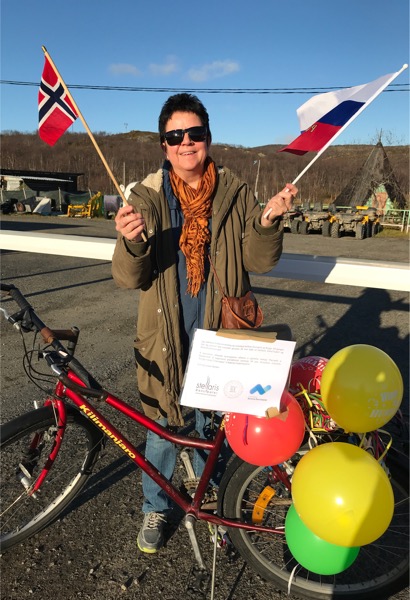 Solveig crossing the border in 2017. Photo: Yngve Grønvik.Our stories
Solveig crossing the border in 2017. Photo: Yngve Grønvik.Our storiesBente:
All my life I have collected stories. As a child, I laid under the table or behind a chair and listened to the adults’ stories. This was before television and the cassette player had just come on the market. The magic in these stories inspired me. The way they were told, how they built to a climax. Dramatic stories, stories full of humour and laughter, stories about him or her who had done a feat, stories from the war, stories that were full of warmth, respect and compassion. Stories that had no geographical boundaries but could just as well have had their start on the Russian side, to end in Finland. There are several places where our paths meet and cross in both language and culture. In several places, hybrid societies are developing with a distinctive climate and their own culture. Sør-Varanger municipality and Nikel in Murmansk Oblast is one such area, with its own 'people' called 'Grenseboerne' (Border inhabitants). Here the border is crossed freely for those who live there, signs are in Norwegian and Russian, the clothing and food traditions are mixed, and a love has blossomed between the people. These relationships bring very special voices, very unique stories and also own artistic methods for the artists who work in the area. Since the people who live here have different traditions which create contrasts, their expressions can be placed in a historical context and challenged with new artistic expressions.
Samovarteateret creates new drama, based on stories from the border region of the North. This gives the performances an international flavour and has taken the theatre out into the world - to other border regions such as the Caucasus, the Carpathians and the Baltics. Samovaretateret has a strong community involvement and a clear goal of creating performances that raise questions about the present time. As a result of the transnational productions Samovaretateret and Andersen have made, they have developed their own working method, the 'Samovar methodology'. It means that text, movement, music, different cultures and languages become equal and intertwined into one. They look for physical movement, timbre and dynamics, differences and similarities in their expression. The belief that performing arts can communicate and move us where politics and words do not suffice, is a strong driving force and helps to produce performances that will basically communicate across national borders and with different cultures. In the latest production of the Samovaretateret “Lost in the horizon”, the theme was human dignity and focus on the borders that are being closed again in Europe today. This production was in collaboration with the Karelian National Theatre in Petrozavodsk, Russia, which Samovaretateret has worked closely with for several years. It is no coincidence that there has been a very valuable collaboration with this particular theatre. The theatre is also bilingual, and in addition to Russian as stage language, they also use Finnish in their work.
Leinan-Hermo emphasises that Stellaris DansTeater has always been a Barents Company in spirit and activity, and was early to mix Norwegian, Swedish, Finnish and Russian practitioners in their performances. In 2008, Stellaris created a collaboration with Finnish Flow Productions, “Touching Point”, by choreographer Maria Littow with performers from each country. The performance was inspired by a quote from the Finnish poet / author Vuokko Koistinen: 'You touched me so softly, and yet you shook so much inside me'.
“Touching Point” changed each time it was performed, as it directly connected to its audience. Every performance was built on improvisation and the audience got to choose the music. The work became very relevant, as it was precisely the meeting between people with different backgrounds, roots and values. Stellaris DansTeater has also granted the right to use their performances in Russia. The company's most played performance is the dance theatre “Dunongen and Tempusegget” (Baby seagull and the Egg of time) by Leinan-Hermo, today in the repertoire of the company Druzhba in Arkhangelsk. The performance was made in 2000, and had a new premiere in 2001 in Norwegian, Finnish and Russian. It has been played in Sweden, Finland and Russia, toured the schools in Finnmark several times and been a guest performer at festivals in northern Norway. Show ballet in Nikel has also received several choreographies, including “Godt at Gråmåsan Song” (When the seagulls sang) and “Natten er min Søster” (The night is my sister). In Russia, they have a tradition of maintaining repertoire, and in this way Leinan-Hermo has also ensured a longer lifespan for Norwegian choreography. At the same time, Norwegian contemporary dance is not an 'everyday item' in Russia, so this has been a request from Stellaris DansTeater's collaborators. Likewise, Leinan-Hermo has been a driving force in bringing Russian choreography and tradition to the Norwegian stage, which has been very clear in her work over the years.
Andersen and Leinan-Hermo have insisted that the Barents collaboration is a matter of fact, and that the voices from the north should be heard. They must be heard because through smaller stories, everyday stories, representations, music and movement, they also tell the greater stories of politics, nature, society and the destinies of the people. Therefore, it is also important that these stories are told from the North. By conveying them, we convey not only a living history and the present, but we also help to create the future through experience, dialogue and knowledge. Together Stellaris DansTeater and Samovarteateret created “Svenskongan” (The Swedish Kids) in 1994, which tells the post-war story of two girls from the North region of Finnmark, who were sent to Sweden after the war to be 'fattened up'. With them on stage were Svea Andersen and Kirsten Basma. This was their reality - their story. The loneliness, the fear, the comforting feeling in the performance and the feeling of not being wanted still grips me. The performance left a visual and emotional imprint on me. I will never forget the line 'Clear weather is bombing weather'. I thought we must have learned about this in middle school, but Leinan-Hermo told me that this was not actually in the curriculum. This points out how important it is that our stories are told, not only on stage, but also through giving the performing arts its place in school. The performing arts have their own peculiar ways of storytelling and can communicate on a completely different level. In 2016, Leinan-Hermo and I started talking a lot about the refugee situation in Europe and the northern Norwegian refugee history about the forced evacuation during World War II. These conversations later led to “Tomorrow's Witnesses” (2018), a collaboration between Stellaris DansTeater and LAVA Dance Production with choreographer Benno Voorham. The performance drew parallels between World War II to the present, based on experiences from those who have experienced the forced evacuation of Finnmark, as well as the reflections on refugees who had recently escaped war and conflict to come to Hammerfest. This was the history of the past and the present intertwined, and the work made clear connections to our society and close communities, presented by community members who had lived through these experiences, alongside professional dancers. Through movements and visual stage images, the community members who participated also got a new voice, which conveyed what their language could not, or their voices did not dare explain.
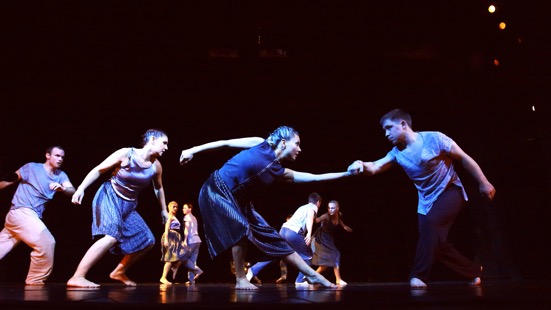 Eivind Linn, Ekaterina Nikitina, Oksana Smirnova and Pavel Dudal, Ksenya Veselkova, Semen Dudal and Tatiana Papulova and Aleksandr Dudal in ADNAZDI (2018). Photo: Kirill Ågnev
Eivind Linn, Ekaterina Nikitina, Oksana Smirnova and Pavel Dudal, Ksenya Veselkova, Semen Dudal and Tatiana Papulova and Aleksandr Dudal in ADNAZDI (2018). Photo: Kirill Ågnev
The one who daresThrough their work, both Leinan-Hermo and Andersen have created a community and a friendship where exchange and respect have been central - with each other and with their partners on the other side of the border. I think this is the reason why they have had success with their work. It is characterised by openness, the ability to listen and at the same time to dare to think through one's own and others' reactions. At the centre is often a personal meeting and a personal story.
Bente:
Meetings between people are fascinating – in the meeting between two people, everything can change. I want to create meeting places, where different generations from different environments and cultures can meet, where we can converse together, directly - not online, but see each other's reactions, smiles, laughter and concern. Where we can talk together about the small and big events that affect us as human beings. Leinan-Hermo has worked hard on her own expectations and wishes. Over the years, continuous collaboration has developed trust, which has borne fruit in the form of new performance expressions. The Karelian National Song and Dance Ensemble 'Kantele' invited Leinan-Hermo in 2016 to create a work that brought together Kantele and Stellaris DansTeater in a production where she would address the different cultures, through the Vespes and the Sami. “Adnazdi” premiered in Petrozavodsk in Karelia October 2018 and then visited Kondoponga, Kem, Lovozero, Murmansk, Nikel and Hammerfest. Russian traditional dance and Norwegian contemporary dance were mixed with the rhythm, colours and joy in the forefront. Halvdan Nedrejord, Sami composer and musician together with Kantele's vocal group, Aino, created a unique and beautiful soundscape for the performance that echoed both Karelian and Sami culture. “Adnazdi” was celebrated by the audience, both on the Russian side and in Hammerfest. The Russian partners experienced the performance as an experimental performance that was innovative in its character, emphasising the value of our history and tradition in a contemporary expression.
In 2017, I was in Hammerfest as artistic director of DanseFestival Barents, one of the festivals and meeting places in the Barents region that has developed from the Barents collaboration through Stellaris DansTeater. The festival was opened with the commissioned work “BarentsKræsj”. Traditional Russian repertoire in classical ballet was staged together with folk dance from Murmansk with Norwegian direction, film and light. Again within a Norwegian contemporary expression, but this time focusing on the contrasts. The traditions of the repertoire were picked apart and put together in new constellations. The work stretched into long tones and silence, in stark counterpoint to the rhythmic, fast feet and high jumps that traditionally stood in line with the traditional Russian music. The expression was also dark, and not typically entertaining, as the Russians' traditional art repertoire often is. I know that the process was difficult, not only because the ensemble only had a few days to create the performance, but because we were disrupting traditions. The reactions from the Russians were divided. Elements that they saw as central, including the colourful costumes, were replaced with black outfits. Some did not understand the meaning of such a production, as it did not strengthen traditional values. The biggest objection was that the choreography was to the wrong music. All the conversations that followed, and what the artists and audience thought was also an important part of this production. Since this was the festival's opening performance, there was a lot of conversation during the festival, and I was told that there were still discussions on the bus on the way back to Russia. Many had a great experience of the work, but some found it difficult to see traditional repertoire being dismantled in this way. In my eyes, the result was groundbreakingly surreal and beautiful. The value of skilled Russians taking care of their fantastic repertoire was clear. Both productions, however with very different starting points, were an eye opener for me in terms of how far the collaboration had come and how long this has taken. The relationship of trust that Leinan-Hermo has built up with the companies played an enormous role for both works, which shows that a long-term time perspective must be an essential piece in cultural exchange work. Leinan-Hermo has now been invited to create a new stage performance with Kantele in 2019 at the same time as a further tour with “Adnazdi” is planned.
Solveig:
Even a small movement can be the start of something big. If you do not dare, you will not get anything back. Getting to know your neighbour opens new doors that you didn't know existed. By shaping new paths, colouring, providing content and reflecting on meetings with new people, I want to help create. This is to contribute to a community that provides more personal and many different voices. Through collaboration, we take part in each other's development, an expansion that can be useful on a personal and professional level for all parties. Andersen and Leinan-Hermo´s work as collaborators across the Russian border has created a wide network of professional actors who trust each other, and who dare to work together to look for new expressions and provide new opportunities on both sides of the border. The exchange that takes place creates new starting points for both sides. Through meeting new people and new knowledge of different cultures, we get more door openers to also get to know ourselves better. Through cultural exchange we challenge our own perceptions and rather focus on each other, for mutual development. This also lays the foundation for changes in people's attitudes, which can break down prejudice, as well as create understanding of both others and our own culture. This makes us all richer and is something we must protect. And, if you manage to put it all in a context and create a fruitful collaboration with a focus on cultural exchange across borders, then it classifies as peace work - you are creating a peaceful and positive form of foreign policy. The key to cultural exchange is that it creates contact and allows for human encounters and reflection. Like Margrethe Alnes in the Norwegian Barents Secretariat put it when she visited Hammerfest and DanseFestival Barents in November 2017: 'When there are conflicts, it is easier to contact the other side if you have a friend there'. I asked Andersen and Leinan-Hermo what would happen to the Barents collaboration if funding opportunities are cut and borders close again. They both instantly answered the same thing, and with some force in their voices: 'All the more important!'. Brave souls, to say the least.
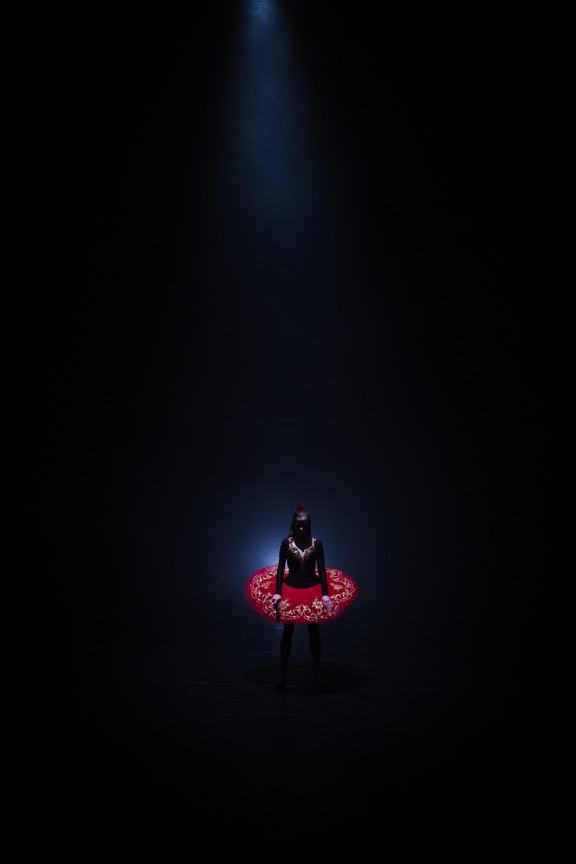 Daria Pereverzeva in BARENTSKRÆSJ (2017) Photo: Kim S. Falck-Jørgensen BIOS Marie Hermo Jensen
Daria Pereverzeva in BARENTSKRÆSJ (2017) Photo: Kim S. Falck-Jørgensen BIOS Marie Hermo Jensen (b. 1979) was born and raised in Hammerfest, Norway. Hermo Jensen studied at Follo Folk High School, School of Contemporary Dance in Oslo (Norway) and has a BA (Hons) from London Contemporary Dance School (UK), where she focused on improvisation and choreography. Hermo Jensen has been employed by Stellaris DansTeater since 2003, a company she currently manages with Solveig Leinan-Hermo. Hermo Jensen has many different roles within the company, and has danced in many of the company's productions. She has created many short dance works, as well as several full-length performances, such as "Anew" (2014) and "Frolic" (2016) in collaboration with Waikato Contemporary Dance Projects Trust, as well as short films including "Bird" (2018) in collaboration with Leinan-Hermo, Karen Barbour and Gareth Schott.
Hermo Jensen has been a contributor to Forum for North Norwegian Dance Artists, DanseFestival Barents, the Northern Norwegian regional stage for dance (today DAVVI – Centre of Performing Arts) and Barents Dance Network through Stellaris DansTeater. She was director of DanseFestival Barents in Hammerfest 2016-2018, which she co-directs with Leinan-Hermo today.
Jensen runs Stellaris Dance NZ (SDNZ) in New Zealand, where she works as a dance artist and collaborator. In 2019 SDNZ started Moving Community in collaboration with Word Spark Applied Theatre and in 2020 Hermo Jensen co-founded TCDC - Taranaki Contemporary Dance Collective, premiering their first production “Sphere” at the Govett-Brewster Art Gallery/Len Lye Centre in New Plymouth in 2021. This work was followed by establishing Taranaki Dance Trust later in the year.
Bente S. Andersen (b. 1964) is a trained actor and stage director from the Scandinavian Theater School, Copenhagen. She has solid experience in developing and working on newly written drama, both nationally and internationally. In 1990, she established Samovarteateret in Kirkenes and has staged more than 50 performing arts productions, often at the crossroads between text, movement and music. In 1996, she took the initiative to start the art group Pikene på broen (The Girls on the Bridge) in Kirkenes. Samovarteateret visited Russia with their first production “Put your heart against mine” already in 1991, and has since then collaborated in various areas, with children and young people, professional performers and had touring in the Barents region and Russia in general. Through her work in Samovarteateret, she has received several awards and scholarships, including Finnmark County Culture Prize in 1999 and 2014–2016 The Government's work grant to delve deeper and further develop the 'Samovar' methodology. In 2017, Andersen and Samovarteateret became the Norwegian recipient of the first Barents Scholarship that was awarded during a ministerial meeting in Arkhangelsk 2017. She has also directed several commissioned works, both smaller performing arts productions and larger outdoor productions. His last assignment was the opening of the festival in Northern Norway 2017, where Andersen had the idea, direction and instruction. www.samovar.no
Solveig Leinan-Hermo (b. 1952) has a degree from the Norwegian Opera Ballet School as a dancer and educator, where she also had her first professional dance job. Solveig has studied theatre and culture at colleges and universities, as well as choreography, various dance techniques and administration. She laid the foundation for a professional dance activity in Northern Norway when she established Stellaris DansTeater in Hammerfest in 1980, with main work in the Barents region / Northern areas. Through many years of work, she has contributed to growth in stage dance both locally, nationally and internationally. She has worked to establish both DanseFestival Barents and DAVVI – Centre of Performing Arts (previously called Dansearena nord) in Hammerfest. Leinan-Hermo was one of the founders of the Forum for Northern Norwegian Dance Artists and has put a lot of work into the Barents Dance Network since 2003. She has received many awards, including the Dance Info Norway honorary award in 2003, Finnmark County Culture Award in 1990, Forum For North Norwegians Honorary Award in 2020 and The Barents Scholarship in 2021. She was a festival artist at the Arctic Arts Festival in 1989 and DanseFestival Barents in 2010. Solveig has received a 3-year work scholarship from the Arts Council Norway twice as well as the senior scholarship. Stellaris DansTeater is today the oldest independent dance company in Norway. The company has delivered countless productions and continues to have high activity. www.stellaris.no

